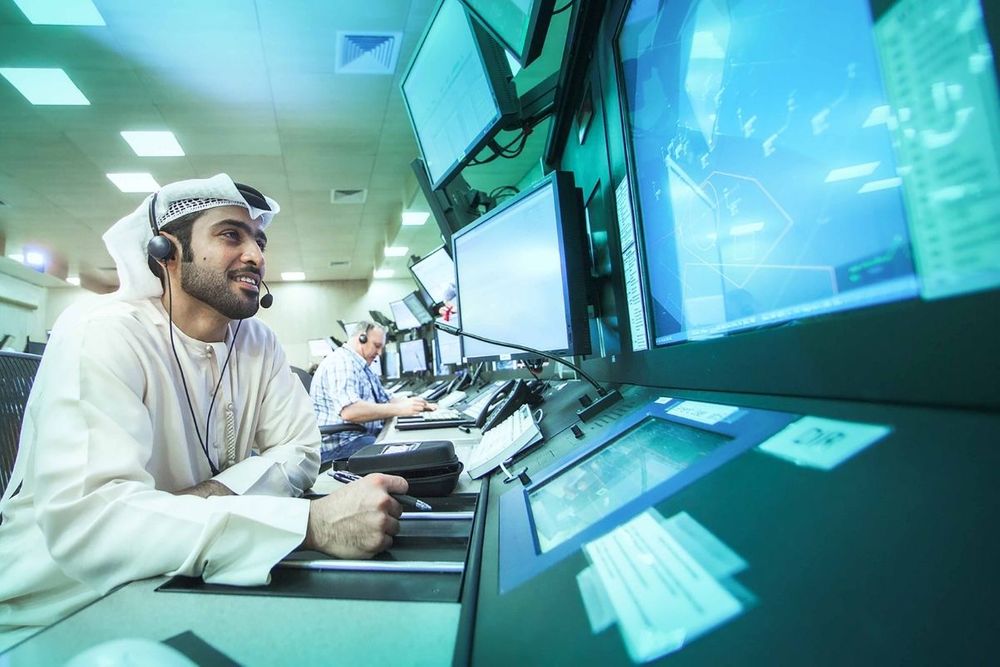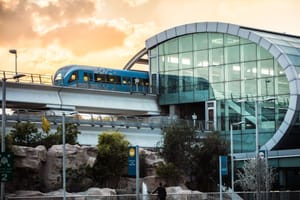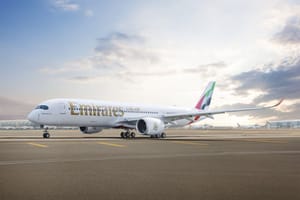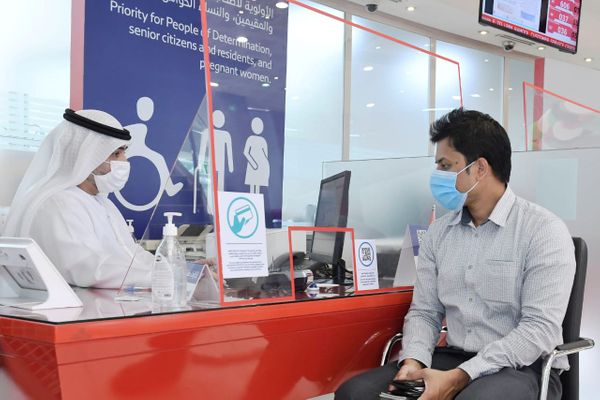Dubai Air Navigation Services (dans) has started implementing new procedures that created more hourly runway capacity for the departing and landing aircraft through their re-categorization based on the wake turbulence to reduce the minimum safe separation distance between two aircraft of different or the same size and increase the efficiency of the landing and departing procedures along with reducing the delays.
The Dubai RECAT-Enhanced Wake Turbulence Separation within Dubai Control Area extends across 50 nautical miles centred at Dubai International (DXB), one of the three airports the Air Navigation Services Provider (ANSP) handles in the UAE, in cooperation and coordination with the International Civil Aviation Organization (ICAO) and other relevant international organizations to upgrade the standards of air navigation services at the global and regional levels.
The project comes within the framework of the strategy of the world-class ANSP at three airports in the UAE, including Dubai International, the world’s busiest airport for international travellers, that calls for implementing pioneering measures and innovative initiatives aimed at enhancing Dubai’s global position in the aviation sector and continuously upgrade the standards of security and safety across its airspace and that of the whole of the UAE.
H.H. Sheikh Ahmed bin Saeed Al Maktoum, President of Dubai Civil Aviation Authority, Chairman of Dubai Airports and Dubai Air Navigation Services, and Chairman of Chief Executive of Emirates Airline and Group, said:
"Dubai RECAT is a major and unprecedented achievement in the ways the air traffic controllers deal with the flights – the result of more than seven years of collaborative work and complex procedures and data analysis carried out by specialized teams of experts. The project contributes towards enhancing the capacity and efficiency of the airports located in the Dubai Approach Area - Dubai International Airport, Sharjah International Airport, Al Maktoum International Airport and the Emirates Flight Training Academy - in line with the vision and mission of dans to enhance the receptive capacity of Dubai’s skies in cooperation with the authorities concerned.''
He remarked: "This strategic project, being implemented for the first time in the Middle East, will contribute towards enhancing the performance of Dubai airports in three ways: increase the capacity of our airspace, reduce the time for landing flights during the peak periods, and saving fuel at our airports."
The new procedures that have been implemented will increase two to three additional aircraft movements (arrivals) and six movements (departures) per peak hour for Dubai International Airport along with saving a lot of hours of flying and manoeuvring in Dubai’s airspace by pilots until they are granted permission to land and depart, especially during the peak periods.
Sheikh Ahmed added:
"We are working 24/7 to move forward with our plans to make Dubai ‘the airport of the world’ in response to the vision of His Highness Sheikh Mohammed bin Rashid Al Maktoum, Vice President and Prime Minister of UAE and Ruler of Dubai, and when we gradually come out from the coronavirus pandemic’s impact in the coming times, we will be ready to receive millions of travellers resuming their normal lives and travelling."
He expressed his deep appreciation for the teamwork that was behind the success of this complex task and to the ANSP’s strategic partners who contributed towards making this project a reality.
This project is a good model that can be applied to contribute towards expanding the airspace in the region. The Dubai RECAT project is a distinctive contribution to the efforts of the ICAO and other relevant international organizations in terms of planning and setting standards for air navigation services at the global and regional levels. The minimum limits for the convergence of aircraft movement within the Dubai control area are applied for departing flights, by determining the flight times between successive aircraft, as these distances between aircraft, determined for pilots either by time or distance, are provided by the air traffic control tower at airports Dubai.
Mohammed Abdulla Ahli, Director General of Dubai Civil Aviation Authority and CEO of dans, underscored the importance of the new project which is aligned with Dubai’s ambitions in the field of aviation. He pointed out that it is an unprecedented achievement for the air transport industry following the best international security and safety standards.
He said:
"We have the human and technical competencies to achieve our ambitions to become the best in the aviation sector, and we were able, through the tireless work of our experts, to implement complex procedures for the first time at the country and Middle East’s levels in the process of handling incoming flights through Dubai airspace. This will have a significant impact not only on the arrival timings of flights but also on the profitability of airlines through saving on fuels during operations approaching the control area in preparation for landing at DXB."
He expressed his deep appreciation for the work done by the team at dans and all those who contributed towards this achievement under the guidance, support and follow-up of His Highness Sheikh Ahmed bin Saeed who is like a beacon for us to achieve the desired goals, continue innovation, and take proactive steps for future needs.
The project, which commenced in 2013, became a reality based on the advanced studies that confirmed the possibility of applying new procedures for handling flights within the Dubai control area. The ANSP worked in cooperation with Emirates Airlines, flydubai, Brussels-based EUROCONTROL which handles air traffic management in 41 European countries and the US-based Coherent Research Group. The project is in line with the future growth of air transport through the Dubai/UAE airspace.
Pre-COVID-19 pandemic, it had been estimated the number of aircraft movements through the UAE’s seven international airports would reach 1.62 million movements by 2030. According to a forecast by Airbus, the UAE’s fleet is expected to triple from 630 aircraft in 2019 to about 1,730 aircraft in 2038. Boeing’s expectations centred on the Middle East countries ordering about 2,945 aircraft. The ANSP’s vision is to enhance the safety, capacity and efficiency of the airspace of Dubai, the UAE and the Middle East. Before the COVID-19 pandemic surfaced, dans were safely and efficiently managing more than 1,338 aircraft movements on an average daily through the Dubai airports.
Ibrahim Ahli, Deputy CEO of Dubai Air Navigation Services, said the implementation of this strategic project will lead to an increase in the capacity of the arrival and departure of aircraft through Dubai airports and a significant decrease in the rate of delays in the arrival of flights at peak times. The ANSP, he said, carried out extensive research and studies and took safety measures before implementing the new procedures, in coordination and cooperation first with Emirates Airlines, and at a later stage with flydubai. Emirates flight (UAE202) is the first flight that landed at Dubai International with new operating procedures in place.
The ANSP presented the results of this pioneering project to the global aviation community in February 2021, during the annual meeting of the ICAO Working Group for the benefit of member-states and international organizations. Dans manages the air traffic through Dubai International which ranks first in the world for international passengers since 2014 and it had handled about 1.115 billion passengers on more than 7.47 million flights since the airport started operating in 1960.
Ibrahim Ahli expressed his deep appreciation to all the parties that supported the project and contributed to its success led by the Dubai Civil Aviation Authority, General Civil Aviation Authority, Emirates Airlines, flydubai and other relevant local and international bodies.
News Source: https://www.wam.ae/en/details/1395302947626









